Tinting is one of those things that is almost invisible while working, but quite hard to ignore when a fault appears. Old window tint isn’t just ugly, but also creates discomfort, safety risks, and extra costs. Now, learn why tint deteriorates, how to spot early signs of damage, and when it’s time for a replacement.
Why Old Window Tint Becomes a Problem
Old window tint films creates opportunities for various major problems that would prevent safety, comfort, and old window tint costs more in terms of other factors. When the window tint begins to peel, it often exposes the glass to direct sunlight.
Safety Hazard
Excessive heat from the sun can damage the vehicle’s interior if the window tint isn’t properly maintained. The adhesive becomes weak, and the film starts to peel. Blurred vision will soon become distracting due to air bubbles or loose corners.
Scattering light at night or perceiving a pedestrian in the rain might become minor detector hazards, making it difficult to reduce glare. In no time, all of these will be full-blown safety hazards.
Decline in Customer Satisfaction
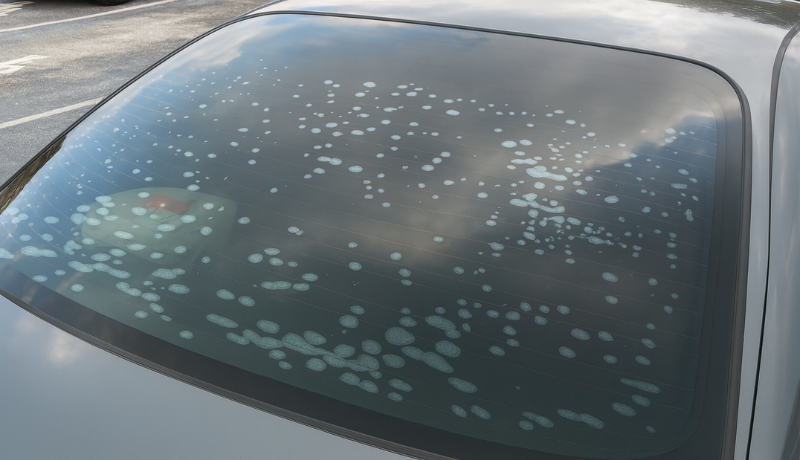
Just picture one of those rideshare passengers stepping into a car with a purple window tint or jagged and peeling. Instant impression: the car feels poorly cared for.
Customers of dealerships make like judgments for used cars. Old window tint raises suspicion on the entire car maintenance, and how efficient the performance is, especially compared to new window tint.
Business Losses
Every failed window tint job directly impacts the business, not only in reputation but also in measurable financial terms. Common losses include:
- Increased fuel costs: When window tint fades or bubbles, more heat enters the cabin, forcing drivers to run the air conditioning at maximum power, which burns extra fuel.
- Interior damage: As the film fails, higher levels of ultraviolet (UV) rays penetrate the windows, accelerating fading of dashboards, seats, and upholstery, eventually leading to costly repair or replacement.

- Warranty claims: Customers dissatisfied with poor window tint quality are more likely to file complaints, demand rework, or request refunds, raising overhead costs and damaging the shop’s credibility.
Factors Affecting Tint’s Lifespan
How long does a window tint last? What shortens or extends window tint life is related to various environmental factors, and if known, it will enable better planning for a business.
Film Type and Material
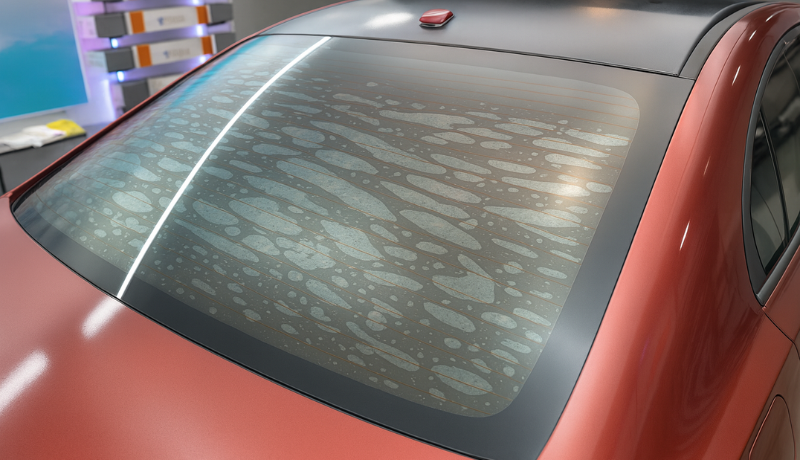
A good window film acts like an invisible shield, protecting the car’s paint and upholstery. There are various types of window tint films.
- Dyed Films: These will be cheaper but will not last through the light. Good for one or two years, but fades typically before the end of its term.
- Carbon Films: Quite strong in between. They hardly fade, evaporate heat, and give that sleek look to the vehicle without affecting signal transmission.
- Ceramic Films: These are the top bets. It can block almost all IR heat and UV rays, and many years are clear with them.
- Metalized Films: Long-lasting generally, but fleets stay away because they interfere with GPS, cellular phones, and pay-per-use transponders.
Construction Quality
The strength of a window tint film largely depends on its brand. Reputable manufacturers use dyes that retain their original shade without fading or discolouring, ensuring the film’s colour stays stable for years.
At the same time, high-quality films include protective coatings that block sun damage while maintaining clear, undistorted visibility for the driver.
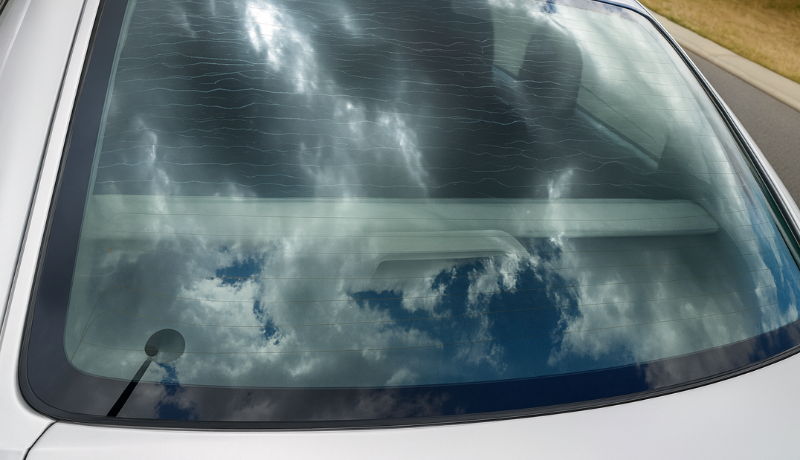
Quality control ensures the same adhesive performance from each individual roll. Cheap brands cut corners, and that shows in the films’ fading after two years instead of ten.
Installation Quality
Even with the best window tint films, it does not matter when the job is done impolitely. Professionals know how to measure precisely, trim cleanly, remove the tint glue properly and promote the curing of adhesives.
Poor DIY work may or may not have even edges or open corners, causing moisture absorption. Ultimately, little flaws left sealed by materials will open into huge bubbles.
Environmental and Usage Conditions
Usually, window tint succumbs to sunlight’s heat. When parked outdoors in extreme sunlight all day long, a car has more chances of degrading faster than if it were parked in a garage.
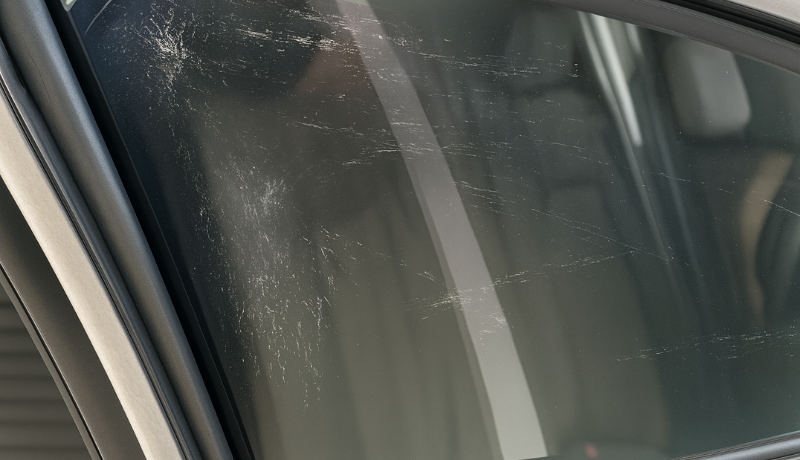
Frequent window rolling, scratches, and friction could also have contributed to the film’s early degradation. Therefore, a fleet that operates in tough conditions would need an upgrade in quality tint to resist the daily battering.
5 Signs That Your Car Has Old Window Tint
Window tints have many benefits, but if they get old, their effectiveness declines. Each following sign gives an indication of a slow breakdown in tinting due to various environmental factors, and therefore, replacement is warranted.
1. Bubbling or Peeling Film
Cause of bubbling or peeling
With heat exposure or poor-quality film, the glues tend to degrade. Air pockets remain after poor installation and now form into bubbles over time.

They obscured vision While Driving
Diffuse light through bubbles and glare are forms of visibility obstruction, considering the fact that their end are peeling, another thing that would obscure the driver’s view and could scratch the glass as it happens when the window closes.
Business Viewpoint
A bubbled window is just begging to be called ‘neglected’ by any fleet. Most customers would surely think the same carelessness applied to the vehicle’s maintenance. These dealerships know better; cars with peeling tint end up sitting on lots for longer periods and sell for less.
2. Purple or Faded Tint Color
Cause of Purple Tinting
Dyed films are based on pigments that break down when exposed to UV light for very long periods. As these disintegrate, so does the tint, going purple in unnatural shades.

Loss of Protection
Now that a tint fades, it plummets ultraviolet filtering capacity, which can significantly affect the car’s appearance. The interiors heat up, dashboards crack, and upholstery has started to fade fast.
3. No Scratches and Film Wear
Cause of Scratches
By rolling up and down your windows, the tint friction burns long lines into the tint, and this causes the film to shrink over time against the seals. Only hastens the damage with abrasive cleaning pads, and only hastens it more with a cleaning spray containing ammonia.
What Scratches Do
Scratches create unequal shadiness and light leakages that damage the film structure, causing more peeling.
Business Viewpoint
Scratches are viewed by customers as the result of neglect. A scratch blocking vision makes the sheens more liable, especially when these belong to fleets carrying passengers using lower quality films.

4. Blurred and Distorted Windows
Cause of Blurred and Distorted Windows
The main culprit is film warping or delaminating. Over time, poor-quality tint films or those exposed to excessive heat and UV radiation begin to break down.
Warping happens when the adhesive and dye layers inside the film expand unevenly under sunlight. This creates waves or ripples that bend light as it passes through, making the glass look distorted.
Delamination occurs when the layers of the film (dye, adhesive, and protective coating) start separating from each other or from the glass surface. This peeling effect scatters light, producing a warped or uneven visual appearance.

Safety Hazards
Blurry windows affect distance perception. Misjudgments would crop up, most especially at night or in wet weather conditions, and accidents would follow.
Customers’ Perception
Once distortion becomes visible, it doesn’t just look unattractive; it undermines visibility and safety. That’s why buyers immediately see it as a red flag and move on.
5. Lesser Protection Against Heat and UV
How drivers notice:
Drivers can discover the window film does not block heat like it used to. It’s noticed when they blast the AC more often, dashboards start cracking, and customer complaints about the high temperature inside the vehicle keep coming in.

Business Cost
In particular, a tint that does not work decreases the cooling effect, thereby diminishing the lifespan of interior materials.
How to Prevent and Slow Down Tint Fading
Smart options and maintenance can assist you in extending the life of your tint.
Choosing the Right Tint Film
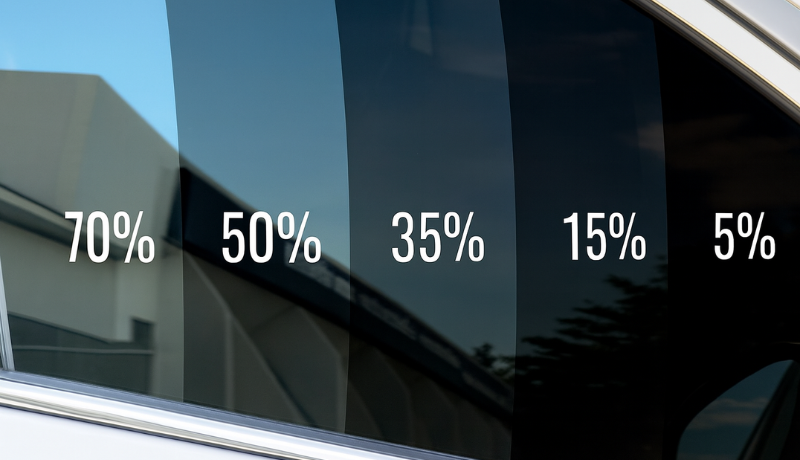
Invest in films with proven UV protection, heat rejection, and long warranties. For instance, premium carbon and ceramic tint options not only stay color-stable but also are much more performance-durable.
Smart Using
Simple habits help you to avoid common causes of window tint fading. Parking the car in a garage or shaded area lessens exposure. Sunshades keep the car’s interiors cooler and slow down the process of adhesive breakdown.
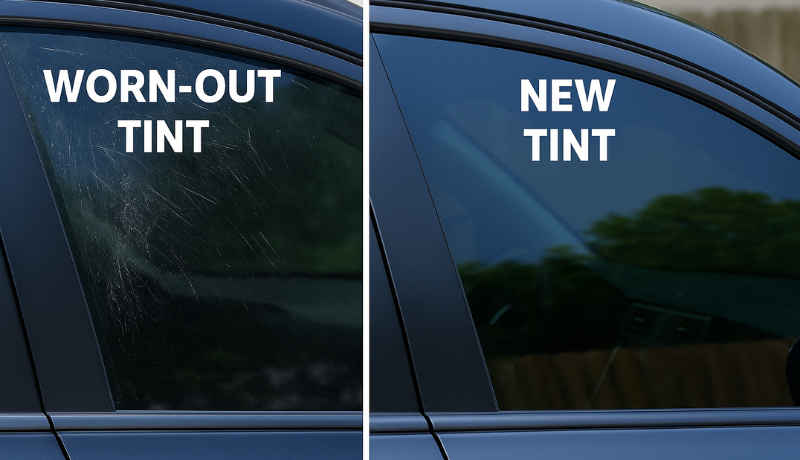
Proper Cleaning
Mild soap and microfiber cloths, avoiding ammonia cleaners or rough brushes that would scratch the film, are what it requires to be cleaned. This small care routine goes a long way.
Solutions When Tint Has Faded
When tint has developed any signs of wear, it’s time to assess how far gone it is before deciding which fixing route to take.
DIY Repair
Scratch repair kits will be of some help with minor blemishes, but they won’t restore any kind of faded performance. Always wipe the tinted window with soft cloths to avoid scratches.
Professional Repairs
Re-tinting specific windows or patching localized damage is proper for capable shops. Proper tinting helps keep direct sunlight out, preserving the vehicle’s interior for longer.
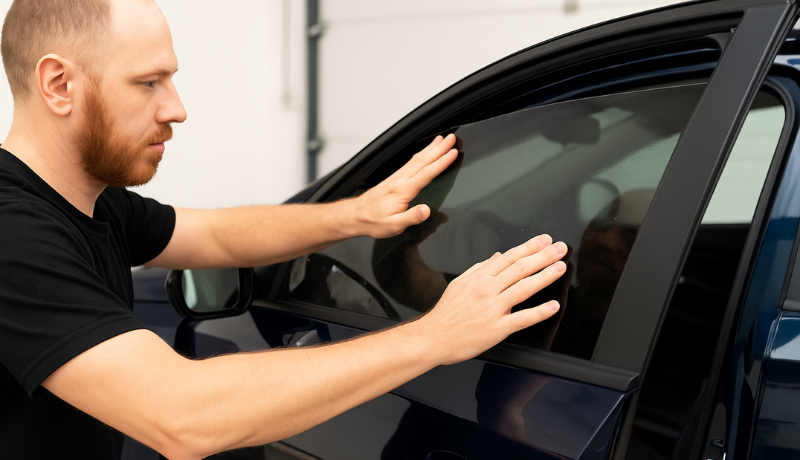
Full Tint Replacement
The only viable solution for more serious cases of widespread peeling, fading, or major warping is the replacement of all film. This solution permits newer technology in tinting to replace old, substandard films, restoring their protection and aesthetics.
Long-Term Payoffs for Keeping Tint Well
Returns of a well-maintained tint on the vehicle’s windows are measurable.
Resale Value
Well-maintained tint makes a car look good, and it can be sold faster. Buyers can see better value and care.
Comfort and Protection
Quality films for fleet vehicles keep the interiors cooler and protect interiors from harmful rays that maximize passenger satisfaction and driver comfort. The life of your tint depends on whether you use soft cloths for cleaning instead of harsh materials.
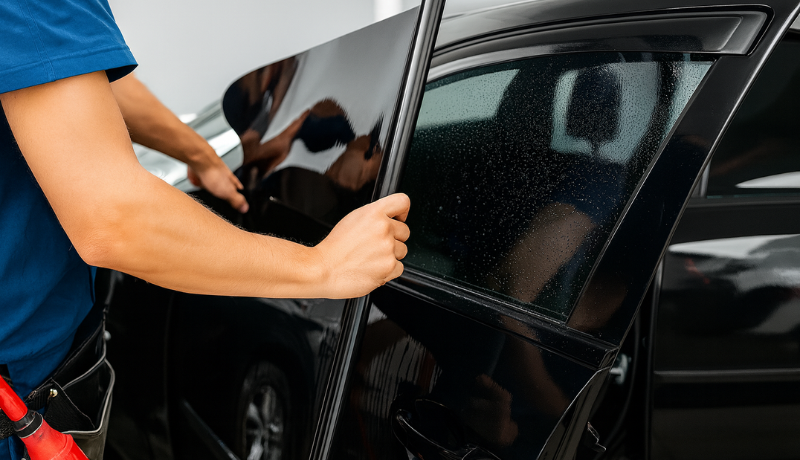
Cutting Costs for Trust and Reputation
Quality tinting reduces heat inside the car, lowering AC use and saving fuel. Car window tint also protects car windows from UV damage, cutting down on repairs and extending vehicle lifespan. These savings not only ease expenses for owners but also strengthen the shop’s reputation as a reliable, cost-conscious service provider.
FAQs
Q1: Why is old window tint a problem for my car?
Over time, car window tint loses UV protection, fades, and bubbles. This will reduce comfort, safety, and your car’s appearance.
Q2. Can faded tints be repaired, or are they only adjustable?
Only very minor scratches on the car window tint can be touched up; any faded or bubbled film should be replaced. A good way to guarantee total satisfaction and prevent future fading is to buy high-quality film types with good warranties.
Q3. How do you determine when it is my time to get new tints?
If you see discoloration, sticky edges, peeling, or decreased heat rejection, it is time to replace.
Conclusion
Old window tint loses effectiveness over time, causing reduced UV protection, fading, bubbles, and poor visibility. Sun exposure, quality, and maintenance all affect its lifespan. So, replacing outdated tint not only restores comfort and safety but also protects the car’s interiors and enhances the driving experience.
Upgrade Your Fleet’s Window Tints with Carlike Today!
Carlike delivers premium window films that block up to 66% solar heat, reject 99.9% harmful UV rays, and offer up to 95% privacy levels. Designed for durability and performance, our window tint films keep your vehicle cooler, protect its interiors, and safeguard valuables.
Contact with CarlikeFilm to protect your investment and keep your vehicles shining with confidence.



